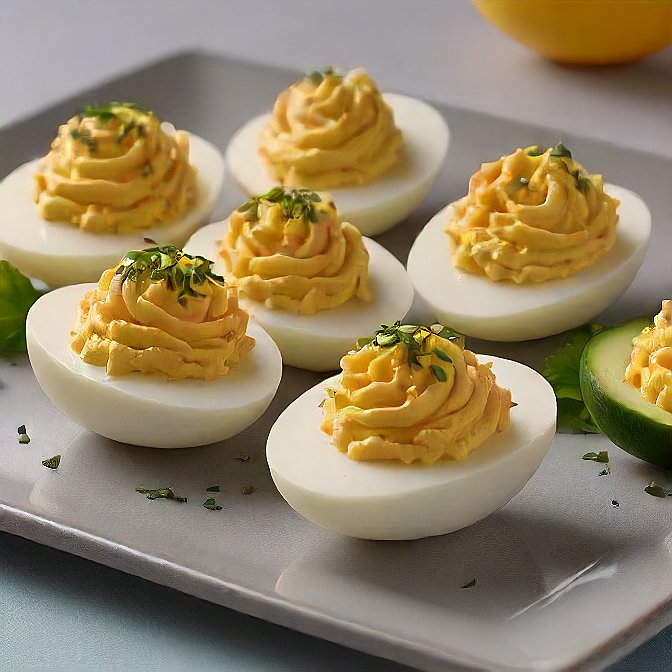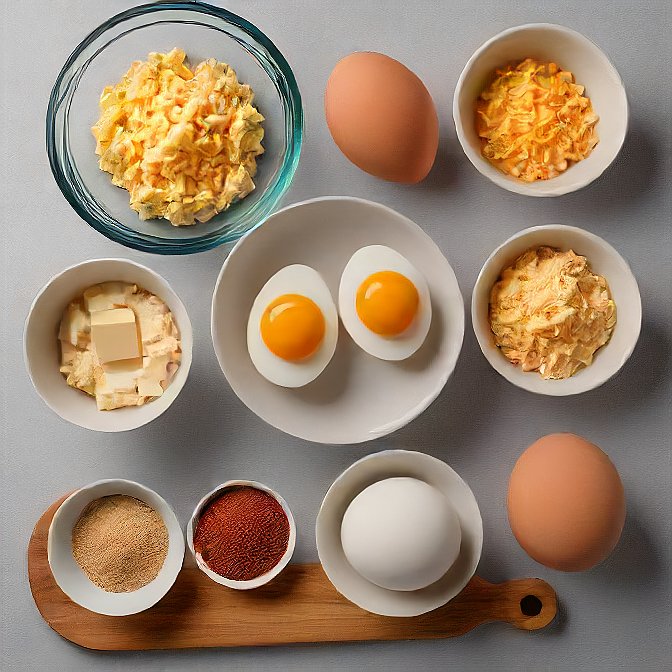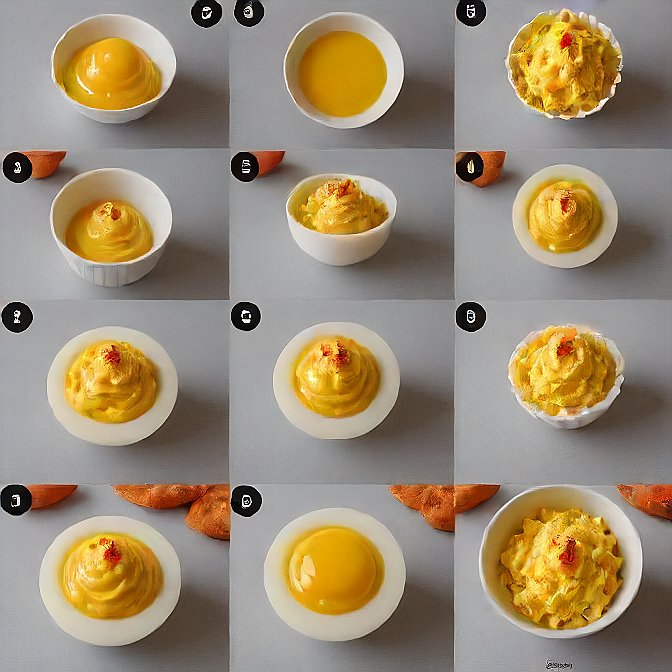The deviled egg recipe stands as a quintessential dish in culinary traditions around the globe, merging simplicity with sophistication. A staple at gatherings and holiday feasts, deviled eggs captivate palates with their creamy filling and delicate flavors. This classic deviled eggs recipe not only honors the dish’s rich heritage but also ensures that even novice cooks can produce crowd-pleasing results. By focusing on the essential ingredients and time-honored techniques, this guide aims to demystify the process, making it accessible for all.

Venturing into this article, readers will first delve into the history of deviled eggs, understanding their journey from ancient roots to modern-day delights. Following this, a detailed list of necessary ingredients will be provided, ensuring that everything is at hand before the cooking begins.
Step-by-step instructions will then lead the way through the preparation process, complemented by tips for achieving perfect deviled eggs every time. Additionally, the article will explore flavor variations to cater to diverse tastes and dietary preferences, as well as advice on how to best serve and store these edible gems. Aimed at enthusiasts and beginners alike, this comprehensive guide promises to elevate the humble deviled egg Recipe into a culinary masterpiece.
History of Deviled Eggs Recipe
The deviled egg recipe, a dish celebrated for its simplicity and flavor, carries a rich history that spans across centuries and continents. This section delves into the origins and traditional components of deviled eggs, providing a glimpse into how this popular appetizer evolved into the delicacy we know today.
Origin of the name
The term “deviled,” as applied to food, first appeared in print in 1786 and was used to describe dishes that were heavily seasoned or spiced. The adjective “deviled” was commonly associated with spicy or zesty food, including eggs prepared with robust ingredients like mustard, pepper, or other spices stuffed into the yolk cavity. The name likely stems from the association of spiciness with the heat presumed to be found in hell, thus linking the term “devil” to food with a fiery taste.
Traditional ingredients
Throughout history, the ingredients used in deviled eggs have seen various iterations depending on the region and era. From ancient Rome, where boiled eggs were seasoned with spicy sauces and served as appetizers, to medieval Europe, where recipes included boiled eggs filled with a mix of raisins, cheese, and herbs like parsley and mint, the components have evolved significantly. The most traditional version of stuffed eggs can be traced back to 13th century Andalusia, Spain. Here, boiled egg yolks were combined with cilantro, onion juice, pepper, and coriander, and then mixed with murri—a sauce made from fermented barley or fish. This mixture was then stuffed back into the egg whites and served as a flavorful dish.
The evolution of deviled eggs continued through the centuries, with significant changes occurring in the late 19th century when mayonnaise began to be used as a binder for the yolk filling, marking a pivotal development in the recipe that led to the modern version of deviled eggs. This use of mayonnaise was first suggested in an 1896 American cookbook, which helped standardize the recipe that includes mayonnaise, mustard, and paprika, as known today.
Deviled eggs have journeyed from ancient appetizers to modern-day party staples, demonstrating the adaptability and enduring popularity of this simple yet sophisticated dish. As they continue to be a favorite at gatherings, the historical context of their ingredients and name adds depth to their enjoyment.
Ingredients Needed
To create the classic deviled egg recipe, one needs a selection of basic yet essential ingredients. These ingredients combine to create a dish that is both versatile and universally loved. Below, the ingredients are categorized by their use in the recipe, providing a clear guide for preparation.

Eggs
The foundation of any deviled egg recipe is, of course, the eggs. For this recipe, one will need 6 large eggs. These should be hard-boiled to perfection to avoid the green tinge around the yolk that can occur from overboiling. Hard-boiled eggs can be prepared on the stovetop, in an Instant Pot, or steamed, and they can be made days in advance.
Mayonnaise
Mayonnaise acts as the creamy base that binds the ingredients together. A quarter cup of mayonnaise is typically sufficient, but some variations might increase this to three tablespoons or suggest a mix of mayonnaise and sour cream for a lighter, tangier filling. For those who prefer a less traditional approach, plain Greek yogurt can be substituted for mayonnaise, offering a healthier alternative while maintaining the creamy texture.
Mustard
Mustard adds a sharp, tangy flavor that complements the creaminess of the mayonnaise. One teaspoon of Dijon mustard is commonly used, though some prefer the distinct taste of Coleman’s dry mustard or prepared mustard. Adjust the amount of mustard based on personal preference for a more or less pronounced mustard flavor.
Vinegar or Pickle Juice
Vinegar provides a bright, tangy element to the filling, balancing the richness of the egg yolks and mayonnaise. One teaspoon of white vinegar is standard, though apple cider vinegar is also a popular choice for its milder taste. Alternatively, pickle juice can be used in place of vinegar, adding a unique flavor twist that many enjoy.
Seasonings
The seasoning mix can vary widely according to personal taste. Common seasonings include salt and freshly ground black pepper, enhancing the natural flavors of the other ingredients. Additional spices such as paprika, Cajun seasoning, or a pinch of curry powder can be added to introduce more complexity and heat. Some recipes also include fresh herbs like chives or parsley, or aromatics such as garlic powder, to elevate the overall flavor profile.
By carefully selecting and preparing these ingredients, one can craft a delicious batch of classic deviled eggs that are sure to be a hit at any gathering.
Step-by-Step Instructions

Boiling the Eggs
- Start with Cold Water: Place the eggs in a single layer in a saucepan and cover them with cold water by 1 inch. This method prevents the eggs from cracking as they are gradually heated.
- Heat and Simmer: Bring the water to a gentle simmer over medium-high heat. Once simmering, reduce the heat to low to keep the water barely at a simmer. This gentle cooking helps prevent the yolks from turning green.
- Timing for Perfect Yolks: Let the eggs cook in the simmering water for 10 minutes. This timing ensures that the yolks are fully set but still bright and creamy.
- Cooling the Eggs: After cooking, immediately transfer the eggs to a bowl of ice water. This stops the cooking process and makes peeling easier. Let them sit in the ice bath for at least 14 minutes.
Preparing the Filling
- Extracting the Yolks: Once cooled, peel the eggs and slice them in half lengthwise. Gently remove the yolks and place them in a small mixing bowl.
- Creating the Mixture: Mash the yolks with a fork until they have a sandy texture. Add a quarter cup of mayonnaise, one teaspoon of mustard, and a teaspoon of vinegar or pickle juice. Season with salt and pepper to taste.
- Mix to Smoothness: Stir all the ingredients together until the mixture is smooth and creamy. If desired, additional seasonings like paprika or cajun spice can be mixed in for extra flavor.
Filling the Egg Whites
- Filling the Halves: Use a spoon or a piping bag to carefully fill each egg white half with the yolk mixture. If using a piping bag, cut the corner of a bag and pipe the filling to give a more professional finish.
- Garnishing: Sprinkle paprika over the filled eggs for a classic look. Alternatively, garnishes such as chives, parsley, or dill can be used for additional color and flavor.
- Chilling Before Serving: Arrange the filled eggs on a platter and refrigerate for at least 30 minutes before serving. This chilling time helps the flavors to meld together and improves the overall texture of the eggs.
By following these detailed steps, one can prepare classic deviled eggs that are both delicious and visually appealing. Each step is designed to ensure that the eggs are cooked perfectly and the filling is smooth and flavorful, making them a guaranteed hit for any gathering or event.
Tips for Perfect Deviled Eggs
Boiling Tips
Achieving perfectly boiled eggs is foundational
Flavor Variations
The versatility of deviled eggs allows for a myriad of flavor twists, ranging from spicy versions that pack a punch to herb-infused variations that offer a fresh take on the classic recipe. Here, we explore a selection of flavor variations that can elevate your deviled eggs to new culinary heights.
Spicy versions
For those who appreciate a bit of heat, incorporating spicy elements into deviled eggs can transform them into an exciting, bold appetizer. One popular option is to use chipotle, either in the form of adobo sauce or chipotle chili powder, to infuse the eggs with a smoky, spicy flavor. Adding diced jalapeños, either fresh or pickled, introduces a crunchy texture and a spicy kick that complements the creamy filling.
For the daring, minced serrano peppers, Thai bird chiles, or habaneros can be used to elevate the heat level significantly. To incorporate a spicy tang, consider using spicy pickles or spicy mayonnaise in the filling. For a festive twist, garnish with a black olive “eyeball” and a sprinkle of paprika for a Halloween-themed treat.
Herbed versions
Herbs offer a way to infuse deviled eggs with aromatic freshness, making them a delightful choice for spring gatherings or elegant brunches. A combination of soft, leafy herbs such as dill, parsley, chives, basil, tarragon, chervil, and cilantro can be finely chopped and mixed into the egg yolk filling. For a more pronounced herb flavor, consider a herbed deviled egg recipe that uses chives and dill, which provide a bright, tangy note to the creamy filling. The addition of sour cream can enhance the richness of the eggs, making them irresistibly smooth and flavorful.
Other unique twists
Beyond spicy and herbed versions, there are numerous creative adaptations that can add an unexpected twist to deviled eggs. Incorporating ingredients typical of other cuisines, such as Tex-Mex flavors with cilantro, jalapeño, and chili powder, or Indian-inspired curried deviled eggs with curry powder and a hint of Fresno chile, can turn ordinary deviled eggs into a standout dish.
For a decadent version, consider adding luxurious elements like crispy bacon, truffle oil, or even lobster. Another innovative approach is a Scotch egg-style deviled egg, where hard-boiled egg whites are breaded and fried, filled with a tangy yolk mixture, and garnished with pickled jalapeño for a spicy touch. Lastly, for a visually striking option, beet pickled deviled eggs offer a vibrant pink hue that is sure to impress at any cocktail party.
By exploring these flavor variations, one can customize deviled eggs to suit any palate or occasion, making them a versatile and appealing choice for any culinary repertoire.
How to Serve and Store Deviled Eggs

Serving Suggestions
Deviled eggs are the perfect make-ahead appetizer for any gathering or celebration. When planning to serve, one can prepare the deviled eggs up to 24 hours in advance. To ensure they look and taste their best, it’s recommended to add any garnishes just before serving.
This could include a sprinkle of paprika, fresh herbs like chives or parsley, or even a small piece of crispy bacon for added texture and flavor. For a visually appealing presentation, consider using a deviled egg platter which not only prevents the eggs from slipping but also showcases them beautifully. If a deviled egg platter is not available, placing a layer of lettuce on the serving tray before arranging the eggs can help prevent them from wobbling, especially during transport.
Storing Leftovers
Proper storage is crucial for maintaining the freshness and safety of deviled eggs. If there are leftovers, they should be refrigerated within two hours of serving to prevent the growth of harmful bacteria. Deviled eggs should be stored in a single layer in an airtight container or a specialized deviled egg carrier to avoid them being crushed or absorbing odors from other foods in the refrigerator.
The USDA recommends consuming stored deviled eggs within 3-4 days. When storing, ensure the container is airtight to prevent the eggs from drying out and to maintain their flavor. For extended freshness, one might consider storing the filling separately from the egg whites; the filling can be kept in a zip bag for 2 to 3 days, and the egg whites up to 5 days. This method also allows for easy assembly of fresh deviled eggs later.
By following these serving and storage tips, one ensures that their deviled eggs remain delicious and safe for everyone to enjoy.
FAQs
1. What ingredients are used to make deviled egg filling?
To prepare the filling for deviled eggs, start by arranging the egg white halves on a platter. Using a fork, mash the egg yolks and mix in mustard, mayonnaise, onion, tabasco sauce, and a bit of salt and pepper. Adjust the amount of mayonnaise as needed to achieve a creamy consistency.
2. Should deviled eggs be prepared a day before serving or on the same day?
It’s best not to prepare deviled eggs too far in advance to avoid the filling drying out and the egg whites becoming unpleasantly odorous. For optimal results, you can prepare the components up to two days ahead but keep the egg whites and filling separate until just before serving.
3. How long should eggs be boiled to achieve hard-boiled eggs?
To make hard-boiled eggs, boil them for about 10-12 minutes. This duration ensures that both the yolk and the white are thoroughly cooked and solid. In contrast, soft-boiled eggs are boiled for a shorter period, about 4-6 minutes, resulting in a runny yolk and partially set white.
4. What is the best method to mash yolks for deviled eggs?
For the smoothest, lump-free deviled egg filling, thoroughly mash the egg yolks using a fork or a potato masher before adding any other ingredients to the mix. This ensures the filling is creamy and smooth, enhancing the overall texture of the deviled eggs.

Classic Deviled Egg
Ingredients
- 6 large eggs
- 3 tablespoons mayonnaise
- 1 teaspoon Dijon mustard
- 1 teaspoon white vinegar
- Salt and pepper to taste
- Paprika for garnish
Chopped fresh parsley or chives, for garnish
Instructions
- Place the eggs in a single layer in a saucepan and cover with water.
- Bring the water to a boil over medium-high heat.
- Once boiling, remove the pan from heat, cover, and let sit for 10-12 minutes.
- Drain the hot water and run cold water over the eggs until they are cool enough to handle.
- Peel the eggs and cut them in half lengthwise. Remove the yolks and place them in a small bowl.
- Mash the yolks with a fork and stir in mayonnaise, mustard, vinegar, salt, and pepper until smooth.
- Spoon or pipe the yolk mixture back into the egg whites.
- Sprinkle with paprika and garnish with chopped parsley or chives, if desired.
- Chill before serving.

Leave a Reply